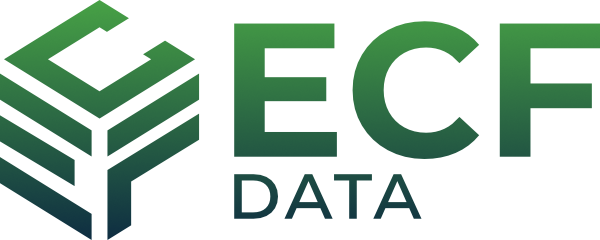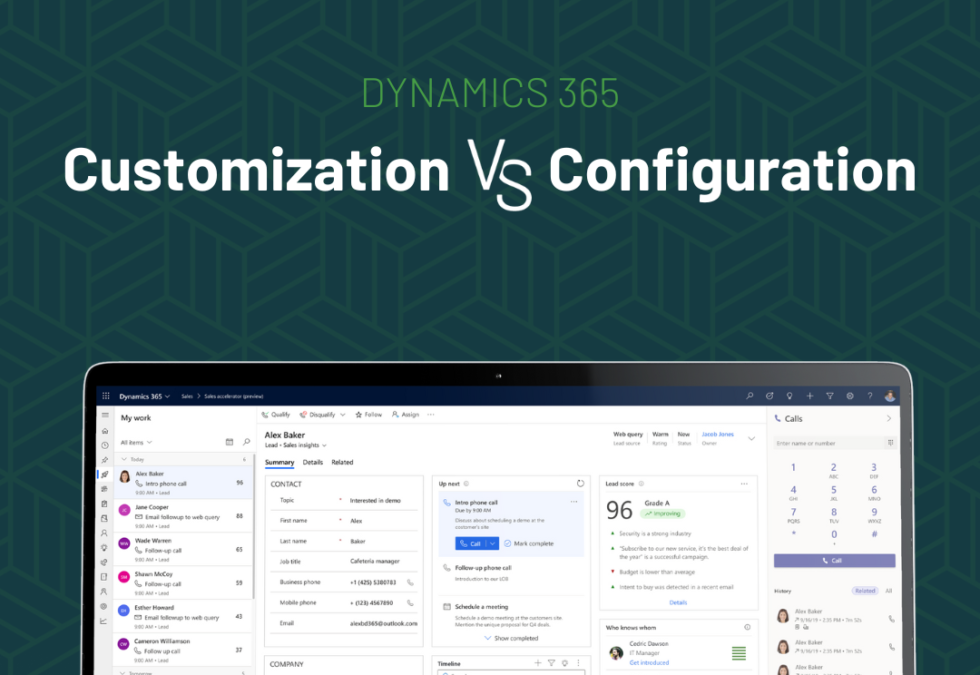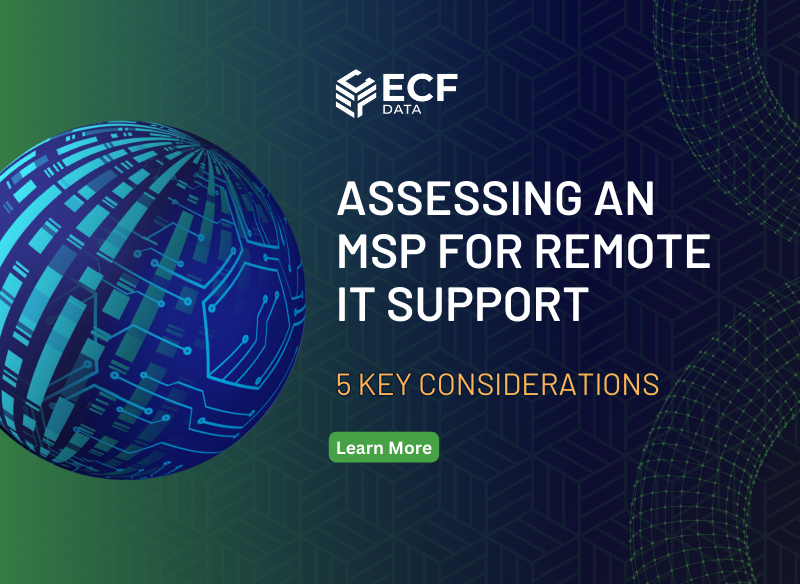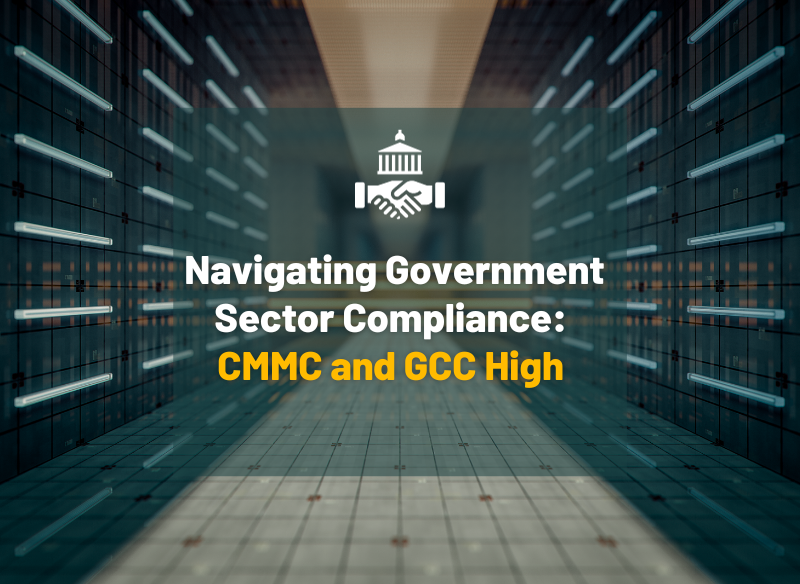-
By: Janina Criador
- IT Consulting
- March 21, 2023
- Comments 0
Dynamics 365: Customization vs. Configuration
The Dynamics CRM platform from Microsoft has been designed to enable administrators to modify the environment to meet business demands without the need for sophisticated coding expertise from a developer. The CRM environment can be constructed with a significant amount of unique functionality using this extremely powerful no-code configuration option without the need for custom scripting or coding techniques.
What is Dynamics 365 and how does it work?
Dynamics 365 is a cloud-based enterprise software platform that combines Power BI reporting capabilities with ERP, CRM, and HCM applications in one streamlined, integrated package. It includes a variety of apps to cover a broad range of business processes: financial planning and reporting, customer relationship management, logistics, and human resource management functions.
Dynamics 365 stands out because of its shared data model, which enables different apps to share data and the fact that it houses all these operations under one roof.
Dynamics 365 Customization vs. Configuration: Is There a difference?
When discussing the implementation of software, we frequently interchange the terms customize and configure. However, they have two different meanings. Our definition below is targeted more for software implementation as it is the context of our blog:
- Configuration – Dynamics 365 Configuration entails creating small changes to the system to complete everyday tasks
- Customization – Dynamics 365 Customization entails to committing bigger changes, like how a system natively functions, to comply a larger purpose.
Customization, as you can see, demands more resources and procedures than configuration. It requires effort, knowledge, and frequently loads of code. Sometimes it alters how the system functions. Because of this, only seasoned software developers handle the customization.
What is configuration in Dynamics 365?
Configuration is essential for running and managing a CRM. The administration and structure of the system are essentially determined by configuration. Dynamics 365 Configuration is crucial for enhancing the user interface, field settings, security, business rules, use of choices and capabilities, and more. As a result, adopting business logic features that don’t require custom programming logic or no-code setup is possible.
Through D365, organizations may define business processes with ease by utilizing the numerous configuration possibilities that are available to match their business needs. Dynamics 365 configuration is applied to conduct the following:
- Forms, validation, and views
- Workflows, Business Process Flows (BPF), reports, ad dashboards
- Database changes and fields
- Calculated fields and templates
- Security settings
A technical expert administrator can also perform configuration using the tools listed below:
Codeless Tool Set
The codeless tool set is only a facet of the customization tool. It covers advanced integration solutions and coded features that delivers basic connectivity to various data sources and systems. As these tools are fully set up and prepared for use within Dynamics 365, writing code is not essential. By using these data integration tools or connectors, the chance of an integration failure is decreased, and data may be integrated and shared simply among users.
Make use of the internal customization tool
It is strongly advised to use Dynamics 365’s internal customization tool. With the help of a controlled edit-publish workbench, this configuration tool enables administrators and IT specialists to update and modify the database, business rules, user interface (UI), and most crucially, settings. The internal customization tool, for instance, can be used to adjust the security level in Dynamics 365. Creating roles and granting users the appropriate privileges and rights in accordance with them is also crucial and is highlighted as one of the best practices for Dynamics 365.
Release in solution packages
Releasing in solution packages lets changes to be bundled and stacked together with the self-documented changes for controlled releases across several environments. CRM changes are apparent and permits developers to link all modifications to stories and tasks inside a solution package. It not only enables data importation between environments but also ensures that data consistency is maintained for automated build-ups and continuous integrations, reducing import errors and accelerating development.
QA in Sandbox Environments
How can solutions be created without interfering with the production environment? Development, testing, and training are all achievable in a sandbox environment without disturbing users or endangering the production environment. Dynamics 365, for instance, offers sandbox environments that act as testing environments as improvements are introduced. A sandbox instance can easily be reset by letting the system administrator to log in and make modifications because sandboxes include administrative controls that are not present in production.
Preview and Publish Mode
The preview and publish modes are another component of the customization tool set and are used to examine changes before and after finishing. Before publishing, a modification can be seen in preview mode. Recognizing that changes are automatically published if new items are added, or existing ones are removed. Moreover, publishing customizations is crucial for exporting with a solution.
Release Solutions Repeatedly
The optimum method for CRM deployment is iterative solution release. Employees can learn and adjust gradually by implementing solutions in little pieces. Also, problems may be quickly found and fixed during iterations before the release of yet another solution. As an illustration, new features may be added to business policies and procedures to address problems. The objective is to have a working CRM fully utilized and boost productivity
Finding the Right Microsoft Partner for your Dynamics CRM Customization and Configuration
For more than a Decade, we have been deploying, developing, creating, and managing Dynamics CRM systems. Helping businesses overcome obstacles and produce better business results is our primary business. Our primary point of differentiation is our team and workplace culture. Our crew is enthusiastic about what they do, and this enthusiasm propels us ahead steadily. We support creativity and innovation. Our approach to solving problems is to always act ethically. We have Microsoft Certified Professionals on staff, and we go through ongoing training to guarantee that Dynamics 365 Customer Engagement customizations are done well.
Dynamics 365 Configuration
From setting up MS Dynamics 365 to configuring it for the appropriate security roles to configuring associated apps like SharePoint, we can assist you with anything related to MS Dynamics 365 configuration. Using the platform’s built-in customisation features is a top priority for us. Without writing a single line of code, we can develop layouts, dashboards, themes, apps, and other components. This enables the creation of a unique CRM user interface that matches corporate branding, improves system usability for users, and supports several languages for multinational teams. We can cost-effectively configure your Dynamics 365 capabilities using no-code configuration.
Dynamics 365 Customization
We keep it very simple. Step 1. We assess your business needs, pains, challenges and operational wishlist, Step 2. Our Solution Architect and MS Dynamics Expert creates a customizable plan. Step 3. We implement and launch your new Dynamics CRM to gather and handle the data your firm needs based on the Business. In addition to creating and modifying metadata, schema features, custom entities, fields, security roles, business logic, custom workflows, forms and views, dashboards, email and notification templates, reports, Power BI Dashboards, and much more, this also entails creating and modifying custom entities, fields, forms, and views. We develop and refine Microsoft Dynamics 365 mobile applications. Our products use the Microsoft Power Platform’s capabilities and UI approach to provide improved automation and data visualizations.
Customized CRM Modules
Dynamics 365’s built-in configuration choices might not be sufficient for an organization to achieve the CRM maturity levels they need. To get beyond restrictions, our solution team extends, builds, and deploys unique CRM components. We also assist you in setting up and installing solutions from Microsoft AppSource or Solution Explorer. Bespoke plug-ins, processes, SSRS Reports, interaction with 3rd Party Software using APIs, Microsoft Portals, and Custom Portals are just a few of the difficult things we can assist you with. We have also developed add-ons to increase your productivity and interact with numerous sophisticated systems, like Xero, MYOB, QuickBooks, and others.
If you’re using Dynamics 365, it’s important to understand the difference between customization and configuration. While configuration involves making changes within the system’s existing framework, customization involves building new functionality from scratch. Depending on your business needs, either approach may be appropriate – but it’s essential to make an informed decision based on your specific requirements. At our company, we have extensive experience working with Dynamics 365 and can help you determine which approach is right for you. Contact us today to learn more about how we can help you customize or configure Dynamics 365 to best meet your unique needs and drive success in your organization.









